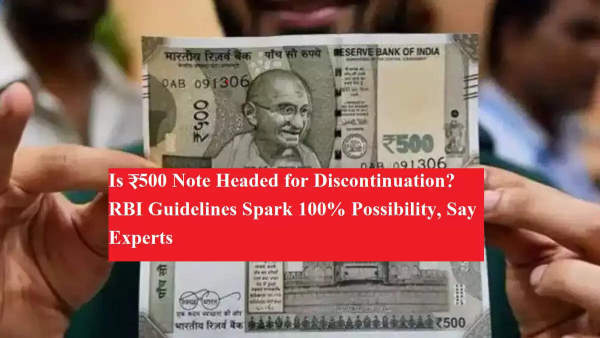
RBI's Strategic Move Hints at Gradual Phase-Out of ₹500 Notes—Here’s What You Need to Know
A recent directive by the Reserve Bank of India (RBI) has triggered speculation over the future of the ₹500 currency note. According to the new RBI guidelines, banks are required to ensure that by September 2025, 75% of ATMs dispense ₹100 and ₹200 notes, and this figure must increase to 90% by March 2026. This clear shift in ATM currency configuration is being seen as a strong move to reduce dependency on ₹500 notes, leading experts to believe that the note might be on its way out—just like the ₹2,000 note.
What Did RBI Announce?
As per RBI's latest instructions:
-
By September 30, 2025, 75% of all ATMs must be configured to dispense ₹100 and ₹200 notes through at least one dedicated cassette.
-
By March 31, 2026, this target will increase to 90% of ATMs nationwide.
Currently, most ATMs predominantly dispense ₹500 notes, with smaller denominations being relatively scarce. RBI’s move is intended to change that dynamic, promoting the use of lower denomination notes.
Why This Move Now?
This change isn't an isolated action. It's part of a larger pattern:
-
In 2016, the government demonetized ₹1,000 and ₹500 notes in a shock move.
-
In 2023, the ₹2,000 note was officially withdrawn from circulation.
Now, with a strong push for digital payments and the rise of e-RUPI and digital currency, experts believe the RBI is preparing for a future with limited use of high-value currency notes.
What Experts Are Saying
Ashwini Rana, founder of Voice of Banking, told Money9 Live that this new ATM strategy strongly mirrors previous steps taken before the demonetization of the ₹2,000 note. According to him, there is a "100% chance" that the ₹500 note could be phased out gradually, especially considering:
-
The increasing use of UPI and digital platforms
-
The reduction in the need for high-value physical cash
-
The desire to minimize fake currency circulation and tax evasion
Rana emphasized that such a change would encourage savings, improve traceability, and reduce the government’s cash management burden.
Financial Impact: Printing Notes Is Expensive
Did you know? In 2024 alone, the cost of printing currency notes touched ₹5,100 crore. By reducing dependency on high-value notes:
-
The cost burden on the government is expected to decrease.
-
India can transition more smoothly to a digital economy.
This is aligned with RBI’s long-term vision of enhancing transparency, improving cash distribution efficiency, and eliminating illicit cash flows.









